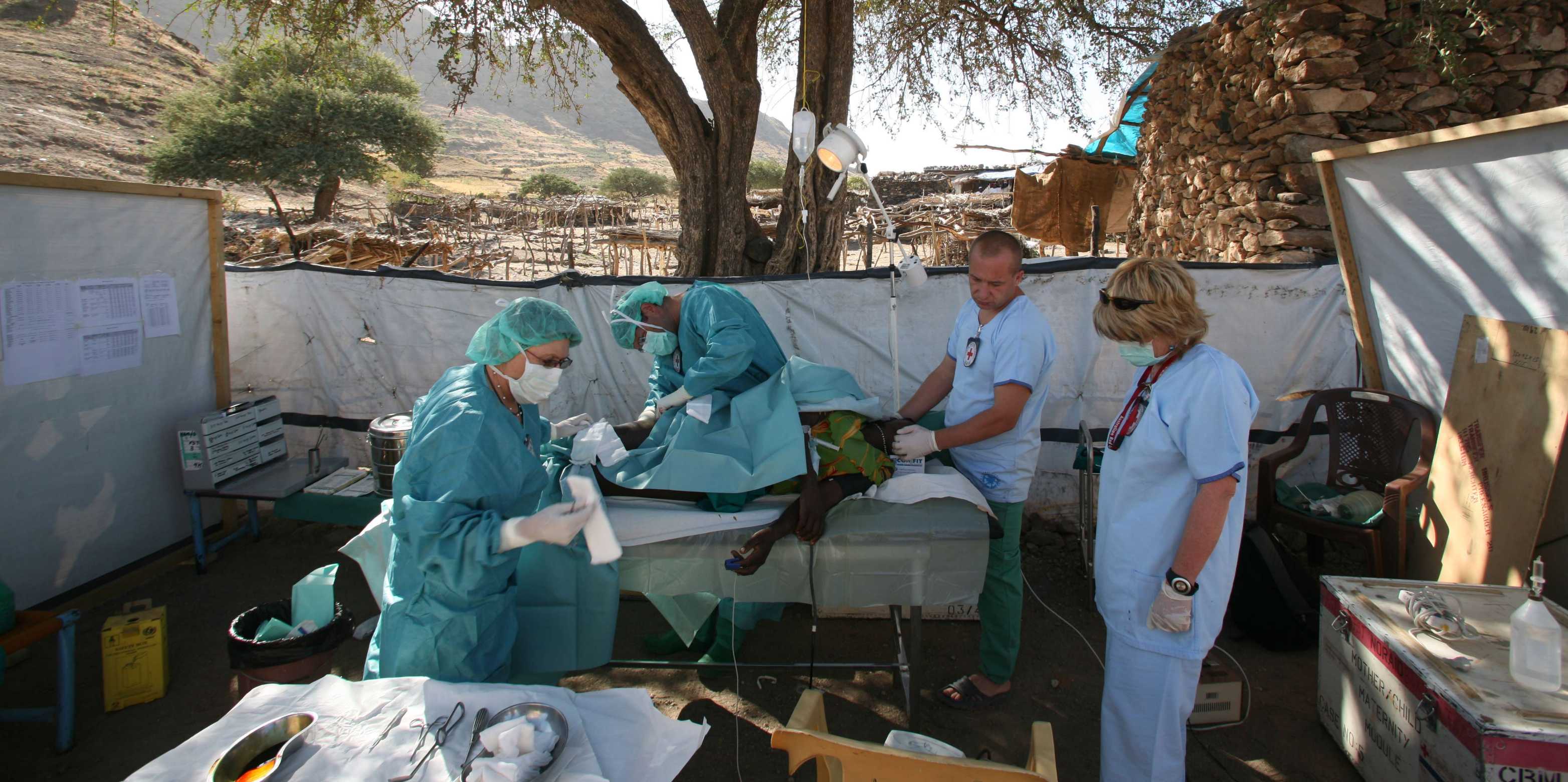ETH Zurich logistics tool saves ICRC millions
The International Committee of the Red Cross (ICRC) provides medical supplies to people in need. A planning tool developed by researchers at ETH Zurich will make this complex task more efficient in future and save the ICRC millions.

In brief
- Researchers at ETH Zurich, in collaboration with the ICRC’s supply chain team, have developed a logistics planning tool that greatly improves the distribution of medical supplies in conflict zones.
- The ICRC introduced the tool at twelve locations in Africa, the Middle East and Ukraine in 2023.
- This enabled it to reduce inventory levels by 24 percent, thereby achieving savings worth 3.6 million Swiss francs, without compromising service quality.
Wars in Ukraine and the Gaza Strip, civil war in Yemen, conflict in Sudan: around the world, military conflicts affect millions. The International Committee of the Red Cross (ICRC) is committed to helping these people by stocking medical facilities with supplies. Getting those supplies to where they are needed is a complex task; bottlenecks and distribution problems crop up time and again.
The goods make their way from the ICRC headquarters in Geneva via regional logistics centres and local warehouses to the crisis areas. These supply chains present a number of challenges to the ICRC’s logistics department: its planners must anticipate how much medical supply will be needed when, and where, and then procure and distribute the goods in time.
To enhance the quality of medical care during humanitarian crises, the ICRC has been collaborating with ETH Professor Stephan Wagner and Bublu Thakur-Weigold at the Chair of Logistics Management, for the past three years. Together with the ICRC’s logistics experts, the researchers have developed an inventory calculator and planning process that greatly improves the distribution of medical supplies in conflict zones.
Savings worth 3.6 million Swiss francs
In 2023, the ICRC introduced the tool at twelve locations in Africa (Nigeria, Central African Republic, Nairobi, South Sudan, Ethiopia), the Middle East (Yemen, Lebanon, Afghanistan) and Ukraine. This enabled it to reduce its inventory of medical supply by 24 percent with no negative impact on the quality of service, resulting in savings of 3.6 million Swiss francs in potential obsolescence.
For instance, in ICRC’s warehouse in Sana’a, Yemen, its logistics specialists reduced the investment in medical inventory from 2.5 million to 0.99 million Swiss francs – which also cut the costs of storage and disposal of expired material.
More realistic planning with the inventory calculator
Before they started working with the ETH team, ICRC’s logistics specialists used to plan their inventory targets based on average annual requirements. However, their planning software did not adequately account for how strongly the demand and delivery lead times could fluctuate. This repeatedly led to bottlenecks and stockouts in the supply chain.
This situation changed fundamentally with the new inventory calculator, which the ETH researchers developed on the basis of logistics research: “Thanks to our collaboration with ETH Zurich, we’ve discovered how strongly demand and delivery times fluctuate for different products. We were able to use the inventory calculator to determine the optimum balance between the desired supply level, and the required stock level for each product,” says Samah El Sayed, who coordinates the global supply chains for the ICRC, and played a key role in the project with ETH. This has enabled the ICRC to better align its services with its resources, and prevent overload in the supply chain.
A transparent logistics system
The ICRC has since integrated the ETH researchers’ planning tool into its existing logistics software. Today, the planning of medical supply and inventory levels is a data-driven process. For those items with reliable delivery times and constant demand, like painkillers, ICRC is able to guarantee a service level of 98 percent.
However, for goods whose delivery times and demand fluctuate more, promising this type of service would drive up stocks to levels that the ICRC cannot finance within current budgets. Supported by the inventory calculator, the ICRC’s logistics specialists have decided to reduce their stock of these goods: in the future, the new target is to consistently supply 85 percent of demand immediately, until demand stabilises.
Relevant for other humanitarian organisations as well
In addition to delivering concrete financial savings, the new planning process has led to better coordination between the ICRC’s logistics specialists and the health teams on the ground. Since it has made the supply of medical goods more reliable, the teams in the healthcare centres have an incentive to improve their forecasts. The improved predictions facilitate the work of logistics planners who, in turn, improve the quality of medical supply.
“With the new approach, we were able to clearly show our partners in the healthcare facilities which risks we would assume for different goods. As a result, they no longer relied solely on our inventory, and improved their own planning,” El Sayed says. And Ruben Naval Artal, Head of Global Supply at the ICRC adds: “The ETH tool helped logistics planners to better manage the ICRC’s financial crisis.”
The results of the collaboration between the ICRC and ETH Zurich can be applied to other humanitarian organisations who face similar challenges.
Researchers deliver science for humanitarian action
This project is part of the external pageEngineering for Humanitarian Action initiative launched by the ICRC, ETH Zurich and EPFL in 2020. The partnership’s goal is to make knowledge and technologies from both universities in the fields of energy and the environment, data sciences, digital technologies and personalised medicine available where they are needed most: in humanitarian crises.
The initiative is supported by the Stavros Niarchos Foundation (SNF), the Foundation for the ICRC and Rolex.
